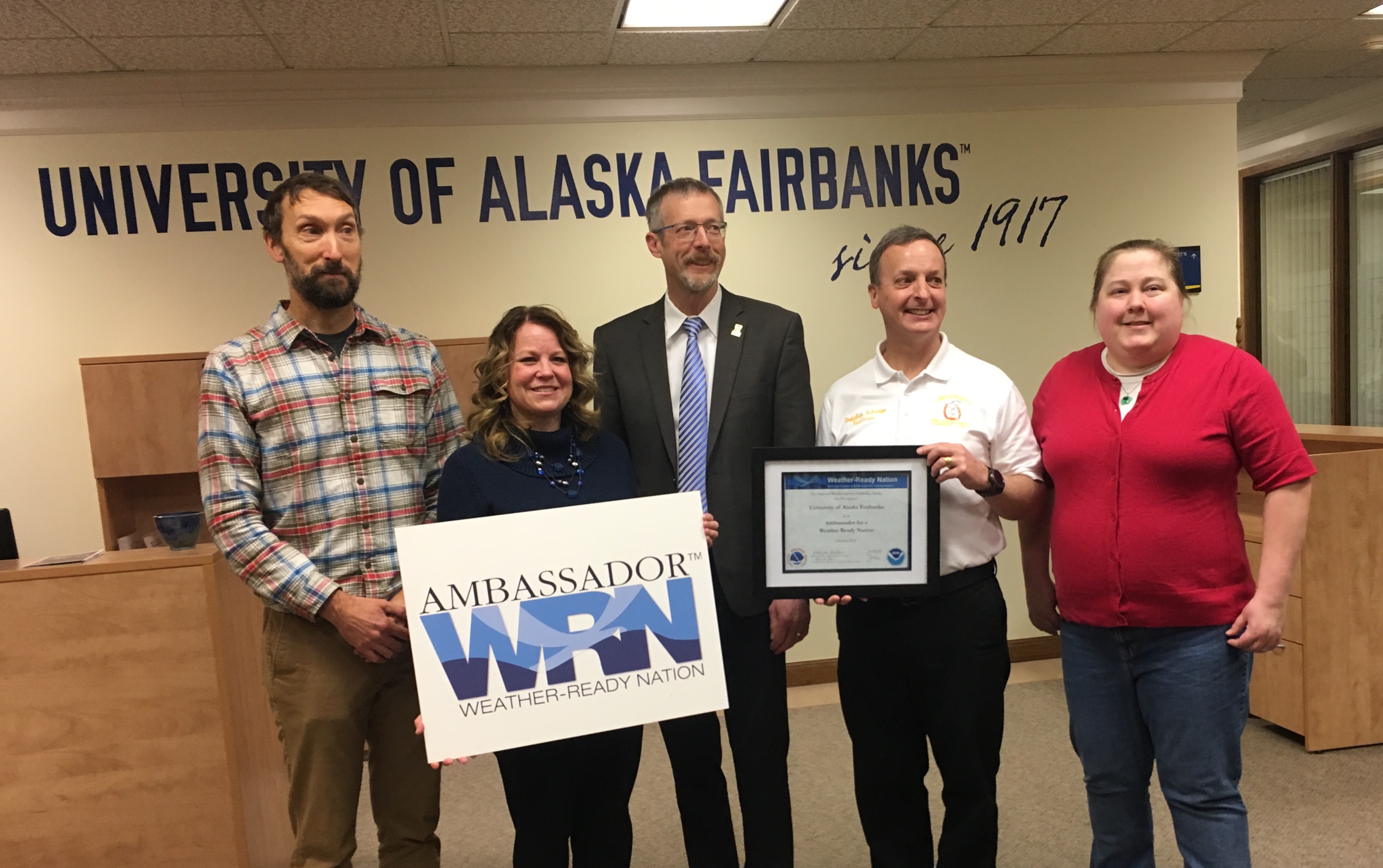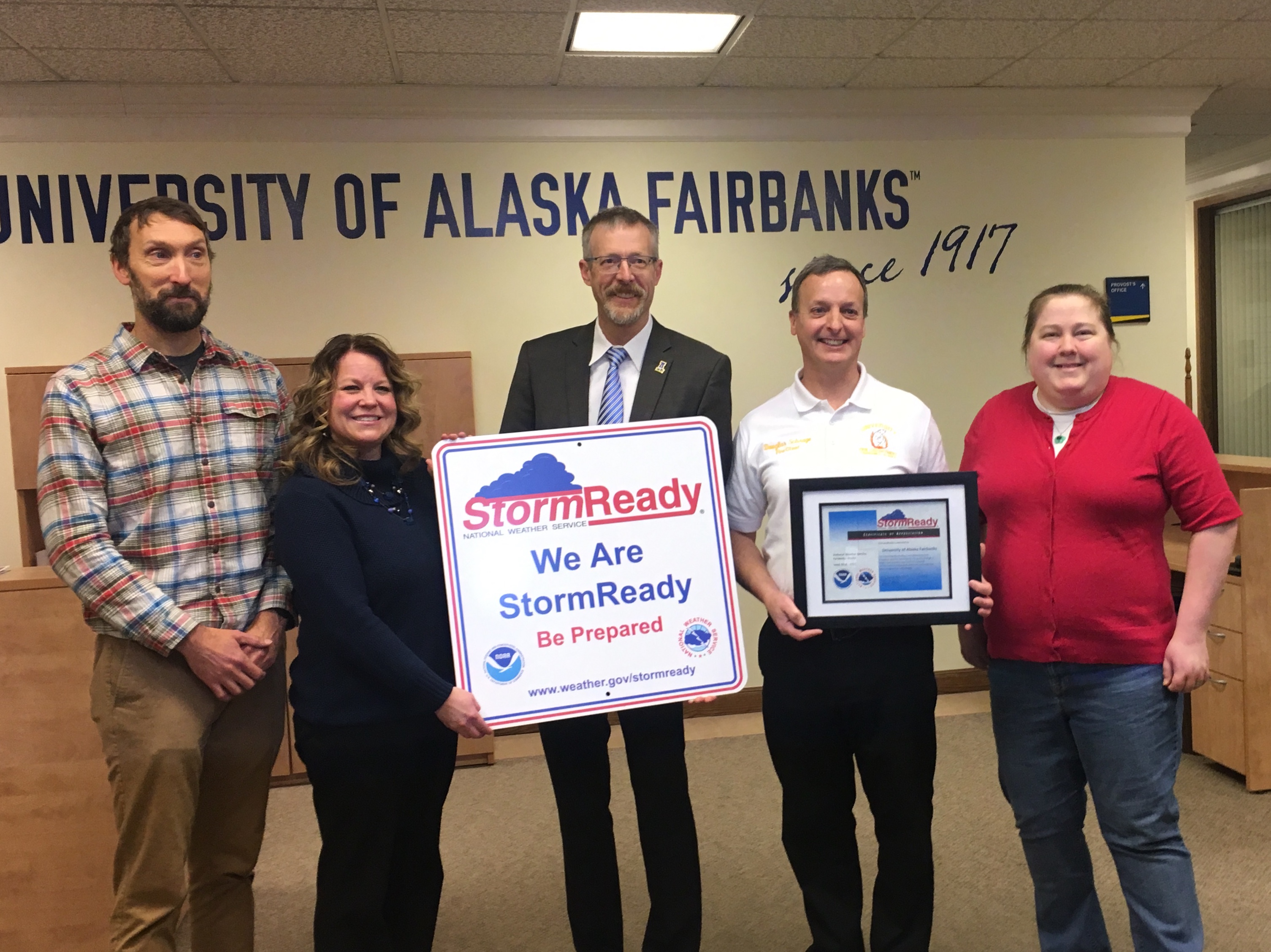University of Alaska Becomes a StormReady University
and a Weather-Ready Nation Ambassador!
First university in Alaska to receive both designations!
From left to right: Warning Coordination Meteorologist, Edward Plumb; Meteorologist-In-Charge, Melissa Kreller; UAF Chancellor,
Daniel White; UAF Emergency Manager, Doug Schrage; and Alaska Region
Meteorologist/Program Manager, Lindsay Tardif-Huber
On Tuesday, December 4, the University of Alaska Fairbanks was formally recognized as a StormReady® university and a Weather-Ready Nation Ambassador! This is quite the achievement as UAF is the first university in Alaska to have these designations. The University of Alaska Fairbanks Chancellor, Daniel White, and the Emergency Manager, Doug Schrage, received the recognition from NWS Fairbanks representatives.
The StormReady® program helps university leaders and residents better prepare for hazardous weather and flooding. StormReady® universities have made a strong commitment to implement the infrastructure and systems needed to save lives and protect property when hazardous weather strikes. To be recognized as StormReady®, a university or community must maintain a 24-hour warning point and emergency operations center; have more than one way to receive National Weather Serivce warnings and to alert the public; be able to monitor local weather and flood conditions; conduct community preparedness programs; and ensure hazardous weather and flooding are addressed in informal emergency management plans, which include training weather spotters and holding emergency exercise. For additional information about the StormReady® program go to www.weather.gov/StormReady.
The NOAA Weather-Ready Nation Ambassador initiative is an effort to strengthen partnerships toward a unified effort to increse national resilience against extreme weather, water, and climate events. NOAA WRN Ambassadors are formally recognized by NOAA as organizations committed to collaborating with NOAA, sharing preparedness messaging in outreach to the public, and serving as examples themselves by implementing resilience best practices.



